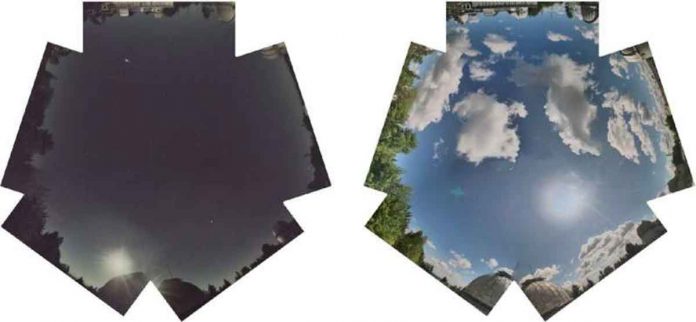Artificial intelligence is being used by Technische Universität Ilmenau (Germany) to improve the detection and classification of unidentified phenomena in the night sky. The data-intensive systems and visualization research group collaborated with the American Meteor Society to launch AllSky7, an international network of scientists and amateur astronomers who continuously observe the night sky with specially designed cameras and classify and assign all events. The related study was published in the Royal Astronomical Society’s Monthly Notices.
The night skies frequently amaze us with their luminous phenomena. We can explain some of them, such as the sparkling of stars caused by atmospheric turbulences or shooting stars caused by meteorites glistening in the air.
Others may appear more mysterious at first glance, such as satellites flying by at breakneck speed or rocket engines crashing back to Earth. The AllSky7 network’s goal is to capture, detect, and classify all phenomena in the night sky around the world. The American Meteor Society, a nonprofit scientific organization led by Mike Hankey that promotes the research activities of professional and amateur astronomers, established the international team in 2018.
All Sky7’s mission is to precisely identify meteorites falling toward Earth as well as sky phenomena caused by other events. 360-degree special cameras continuously monitor the night sky in 85 locations across the United States and Europe, detecting countless phenomena that are analyzed and classified by camera operators by day. However, the algorithms were only trained for a few so-called positive classes, which meant they couldn’t tell meteors apart from other events.
Rabea Sennlaub and Martin Hofmann worked on the algorithm and data for six months. They collected a dataset of 20,000 images of meteors and non-meteors taken at AllSky7 station Sonneberg in Thuringia, Germany, and further separated into sub-classes to ensure a fine-grained classification. The Thuringia research astounded US researcher Mike Hankey: “The results yield a huge step towards a seamless sky observation and can improve the entire network.”
The data now allow for a much more precise estimate of the amount of space debris endangering communications satellites and space station crews’ lives. The findings contribute to the global network of wide-angle sky observatories, cementing an international collaboration. The network also assists in determining when and where meteors fall to Earth. This allows us to analyse the rock debris and learn more about the origins of the solar system.

